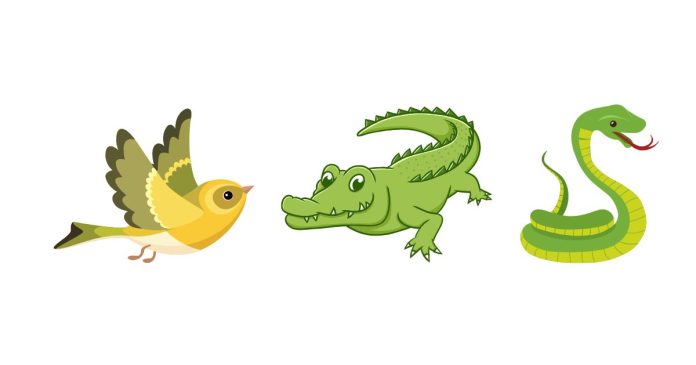Crickets are small, chirping insects that many people are familiar with, but not everyone knows what predators lurk in the wild, waiting to catch these little creatures. As a part of the food chain, crickets face a variety of natural predators that keep their populations in check. But how do these predators hunt crickets, and which animals are most likely to make a meal of them? Let’s explore some of the most common natural enemies of crickets and how they manage to catch them.
Birds: The Most Common Predator of Crickets
Birds are some of the most common natural predators of crickets. Since crickets often live in grassy, open areas, they are easily spotted by birds that are constantly on the lookout for a snack. Various species of birds, such as sparrows, robins, and crows, feed on crickets.
- Hunting Method: Birds have excellent vision and can easily locate crickets from the air or while foraging on the ground. They typically swoop down and grab the cricket with their beaks. Some birds may even forage for crickets at night if they have good night vision.
- Why Crickets Are Easy Targets: Crickets tend to stay close to the ground and often rely on their ability to blend in with the environment to avoid detection. However, their movements and sounds can betray their location to hungry birds.
Reptiles: Snakes, Lizards, and More
Reptiles are another group of animals that enjoy snacking on crickets. Lizards, frogs, and even snakes have been known to hunt crickets as part of their diet.
- Hunting Method: Reptiles typically use stealth and quick strikes to catch their prey. For instance, lizards have a very fast reflex and can pounce on a cricket with remarkable speed. Snakes, particularly smaller species, may hunt crickets by lurking in grassy areas and striking when the cricket is close enough.
- Why Crickets Are Vulnerable: Crickets are highly active and often jump or scurry around, which makes them easy for reptiles with quick reflexes to catch. Their erratic movements may make them hard to catch for some predators, but reptiles are patient and methodical hunters.
Mammals: Small Carnivores and Rodents
Small mammals, like certain rodents and even some larger carnivores, can be a threat to crickets. While these predators may prefer larger prey, crickets are still a tasty snack when the opportunity arises.
- Hunting Method: Mice, shrews, and other small mammals typically hunt for food on the ground. They use their keen sense of smell to detect crickets hiding in leaf litter or under rocks. Once they locate a cricket, they can quickly pounce and consume it.
- Why Crickets Are at Risk: Crickets tend to hide in dark, damp places, but mammals are skilled at finding them, often burrowing into soil or debris to capture their prey. Their strong sense of smell and sharp teeth make them formidable hunters for small insects.
Spiders: The Silent, Lurking Predators
Spiders are some of the most efficient predators of crickets, especially species like the jumping spider or the larger orb-weaving spiders. These spiders set traps or stalk their prey before making a strike.
- Hunting Method: Many spiders, such as orb-weavers, use sticky webs to capture crickets. When a cricket ventures too close, it gets trapped in the web, allowing the spider to approach and inject venom to immobilize its prey. Jumping spiders, on the other hand, actively hunt down crickets using their excellent vision and agility, leaping onto them when the opportunity presents itself.
- Why Crickets Are Easy Targets: Crickets may wander into webs or make noise that attracts spiders, making them easy prey. In the case of jumping spiders, their agility and quick reflexes make it easy for them to catch crickets off guard.
Ants: The Opportunistic Scavengers
Ants may not seem like a major threat to crickets, but they can be a formidable force when working together. If a cricket is injured or weakened, ants can quickly overwhelm it.
- Hunting Method: Ants are highly social creatures that work in large groups. When one ant finds a cricket, it will signal to the colony, and the group will swarm and overpower the cricket. This is especially effective if the cricket is unable to escape or defend itself.
- Why Crickets Are Vulnerable: Crickets are slow-moving and not particularly equipped to fend off a large group of ants. Once an ant finds a cricket, the odds are high that the cricket will become overwhelmed by the sheer number of attackers.
How Do These Predators Catch Crickets?
Crickets are generally not equipped with defenses like strong armor or venom to ward off predators, which makes them vulnerable to many animals. Their primary defense mechanism is to jump away quickly, but this can only do so much against fast predators like birds and lizards.
- Camouflage: Crickets rely on blending in with their surroundings, often hiding under leaves or in dark corners to avoid being seen. However, their chirping can give away their position, making them easy targets for predators with keen hearing, like birds.
- Speed and Agility: While crickets are agile and can jump long distances to escape predators, this is not always enough to outpace their enemies. Predators with quick reflexes or hunting strategies that involve waiting for the cricket to come close are often successful in capturing them.
Crickets may be small and agile, but they are far from safe in the wild. They face a wide range of natural predators, from birds and reptiles to spiders and ants, all of which have developed their own strategies for hunting and capturing crickets. Whether by stealth, speed, or sheer numbers, these predators ensure that crickets don’t thrive unchecked in the ecosystem. Understanding these natural relationships can give us a better appreciation of the role crickets play in the food chain and how different species contribute to maintaining balance in nature.


